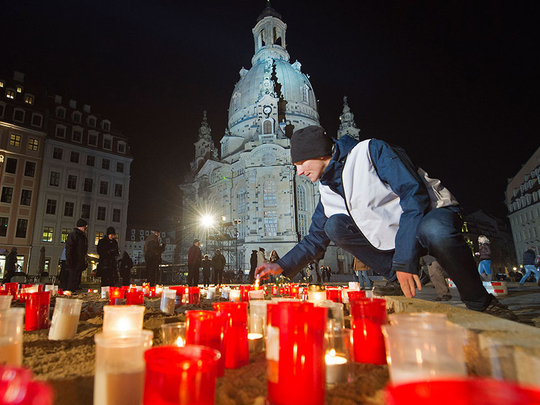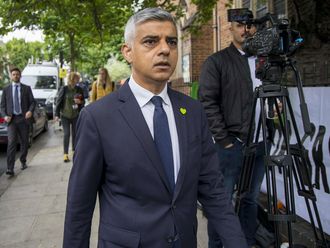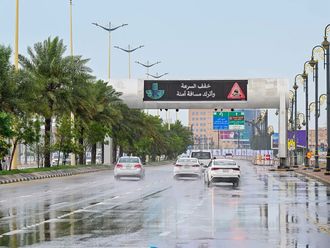
DRESDEN: Seventy years after the Allies firebombed the east German city of Dresden, Germany remembered the tens of thousands who were burnt alive with a sombre church service and a silent human chain to symbolise peace and opposition to racism.
At the Baroque domed Frauenkirche (Church of Our Lady), bells rang out as a service started with delegates from other cities that suffered massive air attacks — Coventry, Breslau, Ostrava and St Petersburg — lighting candles for peace. Some survivors of the bombing attended.
Around 10,000 people joined hands along the Elbe river and across bridges. While Dresden has been the scene of some of Europe’s biggest neo-Nazi marches on February 13 in recent years, right-wing activists were noticeably absent on Friday.
Anti-fascists gathered on the square outside the church carrying a green banner urging people to “Fight for a humane society. Take action against the Nazis”.
Dresden has recently become the centre of an anti-Islam movement that has seen as many as 25,000 protesting against what they see as the growing influence of Islam.
Speaking at the church that was left as a symbolic ruin for years before being rebuilt and topped with a golden ‘cross of peace’ made by the son of a British bomber, German President Joachim Gauck described how the bombers had arrived as children in colourful hats and red noses celebrated carnival.
“Bombs and fire indiscriminately annihilated both guilty and innocent, party members and small children, war criminals and nuns, guards and forced labourers, combat soldiers and refugees who had left their homes to save their lives and believed themselves to be in a safe place,” he said.
British and US bombers killed up to 25,000 when they raided Dresden between February 13 and 15 1945 in a bid to crush German morale in the final months of Second World War.
They dropped at least 3,900 tonnes of explosive and incendiary bombs, unleashing an inferno that melted people and reduced vast areas of the ‘Jewel of the Elbe’ to ash and rubble.
Helga Skoczowsky was nine at the time. When alarms sounded, she took refuge in the cellar of their apartment building, where they listened as the aircraft approached and then a bomb hit their home.
“The noise was dreadful ... the light went out ... the chimney tops blew off. We were covered in black, we had no eyelashes left, our lips were all crusty from the soot and we were all dirty and in the dark,” she told Reuters, fighting back tears.
When they emerged, there was nothing left of their fourth-floor apartment.
“Everything was glowing and burning. People were running and screaming.” But while German suffering was in focus at the ceremony, the victims of the Holocaust, during which 6 million were murdered, were also remembered.
At Neustadt station, where Jews destined to be shot in Riga were once packed into trains, survivors of the bombing lay white roses — a symbol of anti-Nazi resistance and also the motif found on two porcelain plates that survived the Dresden inferno.
Gauck said Germany remembered the victims of Nazism and of German bombing.
“We know who started this murderous war ... so we’ll never forget the victims of German warfare.” For several months the ‘Patriotic Europeans Against the Islamisation of the West’ (Pegida) has held marches in Dresden./sMayor Helma Orosz said that lent particular importance to the anniversary.
“February 13, more than any other date in the history of our city, warns us that we must show solidarity with those who flee war, violence and terror around the world,” she said.











